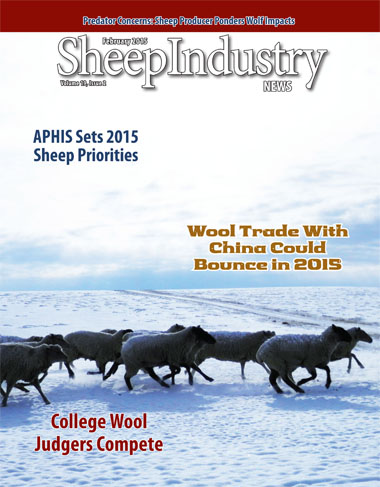Study Continues Look at Guard Dog Breeds
A new study aims to find better breeds of guard dogs for sheep producers – and possibly even some cattle ranchers.
An ongoing study involving ranchers in Idaho, Oregon, Washington and Montana aims to identify breeds that would make better guard dogs to protect livestock from wolves. Julie Young, supervisory research wildlife biologist with the National Wildlife Research Center’s Logan, Utah, branch, explained the current guard dog breeds were selected based on Wildlife Services research from the late 1970s and early 1980s – back when coyotes were the major predator of concern.
Today, ranchers face increasing pressure from wolves.
Young was among several experts speaking during a Jan. 7 meeting on nonlethal predator control options in Dillon, Mont. She also spoke during the ASI convention in Reno.
Young is completing the first year of a three-year study to determine if friendly breeds selected from Europe for their hulking size and bold disposition can better protect livestock from wolves.
Fifteen sheep ranchers who participated in the experiment were given free Kangal, Karakachan or Transmontano guard dogs. The breeds can grow upwards of 150 pounds. Young is still seeking additional sheep ranchers to participate in each state.
“I’m 5-foot-4, and when they stand up they’re much taller than me,” Young said.
Young said some Montana cattlemen also wanted to participate, but the initial experiment will focus only on sheep. She noted the breeds she chose have been used with cattle in Europe, though the Europeans tend to move their cattle in tighter herds, simplifying the job of a guard dog.
Young simulated wolf howls and set out a wolf pelt to test her Kangals against a more conventional guard dog breed, Pyrenees. The Pyrenees dogs had been attacked by wolves two years earlier and remained quiet, despite the simulated threat. The Kangals, however, barked incessantly.
“In many cases, producers really like (the new breeds). In other cases, they’re not working any better,” Young said.
Young believes even the test breeds that haven’t performed well may win over ranchers once they become more experienced.
Meanwhile, John Steuber, state director of USDA Wildlife Services for Montana, said cattlemen who have relied on range riders have grown protective of radio-collared wolves in their areas, as they help in monitoring wolf packs.
“Livestock producers here have really come to support collaring wolves,” Steuber said.
Idaho’s Wildlife Services director, Todd Grimm , pointed to livestock protection dogs and wolf collars as options for non-lethal predator control.
“The wolf advocates are always saying we should be doing more, so we’re going to try to do more,” Grimm said.


